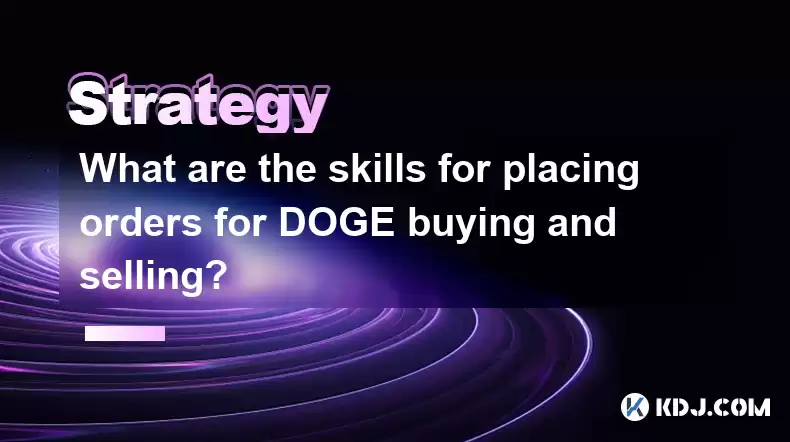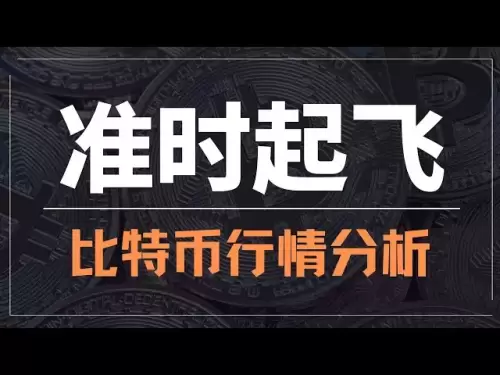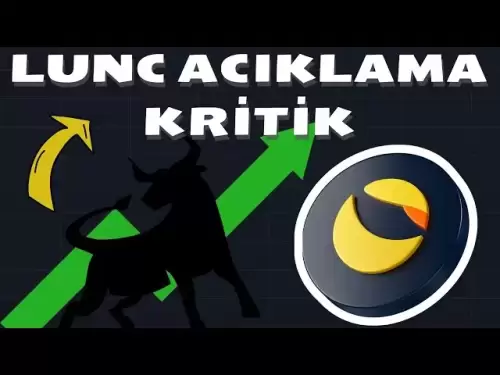-
 Bitcoin
Bitcoin $117300
1.93% -
 Ethereum
Ethereum $3866
5.21% -
 XRP
XRP $3.109
3.81% -
 Tether USDt
Tether USDt $1.000
0.01% -
 BNB
BNB $781.5
1.52% -
 Solana
Solana $173.0
2.95% -
 USDC
USDC $0.9998
0.00% -
 Dogecoin
Dogecoin $0.2181
6.31% -
 TRON
TRON $0.3403
0.93% -
 Cardano
Cardano $0.7683
3.91% -
 Hyperliquid
Hyperliquid $40.08
5.09% -
 Sui
Sui $3.742
7.38% -
 Stellar
Stellar $0.4152
4.69% -
 Chainlink
Chainlink $18.40
10.03% -
 Bitcoin Cash
Bitcoin Cash $580.6
2.21% -
 Hedera
Hedera $0.2543
4.25% -
 Ethena USDe
Ethena USDe $1.001
-0.01% -
 Avalanche
Avalanche $22.94
3.52% -
 Litecoin
Litecoin $121.8
2.24% -
 UNUS SED LEO
UNUS SED LEO $8.955
-0.41% -
 Toncoin
Toncoin $3.330
3.03% -
 Shiba Inu
Shiba Inu $0.00001270
2.97% -
 Uniswap
Uniswap $10.34
6.42% -
 Polkadot
Polkadot $3.805
3.86% -
 Dai
Dai $1.000
0.01% -
 Bitget Token
Bitget Token $4.429
1.80% -
 Cronos
Cronos $0.1495
4.65% -
 Monero
Monero $255.6
-9.08% -
 Pepe
Pepe $0.00001096
4.40% -
 Aave
Aave $282.9
7.85%
What are the skills for placing orders for Doge buying and selling?
Mastering DOGE trading involves understanding basic and advanced order types, analyzing market trends, managing risks, and executing orders on reputable platforms.
Apr 18, 2025 at 09:49 pm

In the world of cryptocurrency, placing orders for buying and selling Dogecoin (DOGE) requires a solid understanding of various trading skills and tools. Whether you're a novice or an experienced trader, mastering these skills can significantly enhance your trading efficiency and success rate. This article will explore the essential skills for placing DOGE orders, covering everything from basic order types to advanced trading strategies.
Understanding Basic Order Types
Before diving into the intricacies of trading DOGE, it's crucial to understand the basic order types. These are the foundational tools that every trader must master.
Market Orders: A market order is an instruction to buy or sell DOGE at the current market price. This type of order is executed immediately, ensuring that you get into or out of a position quickly. Market orders are ideal for traders who prioritize speed over price.
Limit Orders: A limit order allows you to set a specific price at which you want to buy or sell DOGE. If the market reaches your specified price, the order will be executed. Limit orders give you more control over the price at which you trade, making them suitable for traders who are willing to wait for the market to reach their desired price.
Stop Orders: A stop order, also known as a stop-loss order, is designed to limit your losses. It becomes a market order once the price of DOGE reaches a specified level. Stop orders are essential for risk management, helping you to exit a position if the market moves against you.
Using Advanced Order Types
Once you're comfortable with the basics, you can explore more advanced order types to refine your DOGE trading strategy.
Stop-Limit Orders: A stop-limit order combines the features of a stop order and a limit order. When the price of DOGE reaches the stop price, the order becomes a limit order, which will only be executed at the specified limit price or better. Stop-limit orders offer more control over the execution price but carry the risk of not being filled if the market moves too quickly.
Trailing Stop Orders: A trailing stop order is designed to protect profits while allowing your position to continue to grow. The stop price of a trailing stop order is set at a fixed percentage or dollar amount below the market price for a long position or above the market price for a short position. Trailing stop orders automatically adjust as the price of DOGE moves in your favor, locking in gains while still giving the position room to grow.
Analyzing Market Trends
Effective DOGE trading requires a keen understanding of market trends. By analyzing these trends, you can make more informed decisions about when to place your buy and sell orders.
Technical Analysis: Technical analysis involves studying historical price charts and using various indicators to predict future price movements. Common tools include moving averages, Relative Strength Index (RSI), and Bollinger Bands. Technical analysis can help you identify potential entry and exit points for your DOGE trades.
Fundamental Analysis: While less common in the crypto space, fundamental analysis involves evaluating the intrinsic value of DOGE based on factors such as adoption rates, technological developments, and market sentiment. Fundamental analysis can provide a broader context for your trading decisions, helping you to understand the long-term potential of DOGE.
Risk Management Strategies
Risk management is a critical skill for any DOGE trader. By managing your risks effectively, you can protect your capital and increase your chances of long-term success.
Position Sizing: Position sizing involves determining the amount of capital to allocate to each trade. A common rule of thumb is to risk no more than 1-2% of your total trading capital on any single trade. Proper position sizing helps to limit your potential losses and preserve your trading capital.
Diversification: Diversification involves spreading your investments across different assets to reduce risk. While DOGE may be your primary focus, consider diversifying your portfolio with other cryptocurrencies or traditional assets. Diversification can help to mitigate the impact of any single investment on your overall portfolio.
Using Leverage Wisely: Leverage allows you to control a larger position with a smaller amount of capital. However, it also amplifies both your potential gains and losses. Use leverage cautiously and only with a thorough understanding of the risks involved.
Executing Orders on a Trading Platform
Finally, mastering the practical aspects of placing orders on a trading platform is essential for successful DOGE trading. Here's a step-by-step guide to executing orders on a typical cryptocurrency exchange:
Choose a Reputable Exchange: Select a reputable cryptocurrency exchange that supports DOGE trading. Popular options include Binance, Coinbase, and Kraken.
Create and Verify Your Account: Sign up for an account on the chosen exchange and complete the necessary verification steps to comply with Know Your Customer (KYC) regulations.
Deposit Funds: Deposit funds into your exchange account using a supported payment method, such as a bank transfer or cryptocurrency transfer.
Navigate to the DOGE Trading Pair: Find the DOGE trading pair you wish to trade, such as DOGE/BTC or DOGE/USDT.
Select the Order Type: Choose the order type you want to use (market, limit, stop, etc.) from the order entry interface.
Enter Order Details: Input the necessary details for your order, such as the quantity of DOGE you want to buy or sell and the price (for limit and stop orders).
Review and Confirm: Review your order details carefully before confirming the order. Once confirmed, the order will be sent to the exchange for execution.
Monitor Your Order: Keep an eye on your order's status and the market conditions. You may need to adjust your order or place new orders based on market developments.
FAQs
Q: Can I automate my DOGE trading orders?
A: Yes, many cryptocurrency exchanges offer tools for automated trading, such as trading bots and API access. These tools allow you to set up predefined trading strategies that can execute orders automatically based on specific conditions.
Q: What are the tax implications of trading DOGE?
A: The tax implications of trading DOGE vary by jurisdiction. In many countries, profits from cryptocurrency trading are subject to capital gains tax. It's important to consult with a tax professional to understand your specific tax obligations.
Q: How can I improve my DOGE trading skills?
A: Improving your DOGE trading skills involves continuous learning and practice. Consider joining trading communities, reading educational resources, and using demo accounts to practice your strategies without risking real capital.
Q: Are there any risks associated with using leverage in DOGE trading?
A: Yes, using leverage in DOGE trading carries significant risks. Leverage amplifies both potential gains and losses, and if the market moves against your position, you could face substantial losses. Always use leverage cautiously and with a clear understanding of the risks involved.
Disclaimer:info@kdj.com
The information provided is not trading advice. kdj.com does not assume any responsibility for any investments made based on the information provided in this article. Cryptocurrencies are highly volatile and it is highly recommended that you invest with caution after thorough research!
If you believe that the content used on this website infringes your copyright, please contact us immediately (info@kdj.com) and we will delete it promptly.
- Bitcoin Reserve, Gold Revaluation, Congress Considers: A New Era for US Financial Strategy?
- 2025-08-08 04:30:12
- KAITO's Momentum: Can It Reclaim Support Amidst Social Media Scrutiny?
- 2025-08-08 04:30:12
- Pi Coin's dApp and AI Potential: Building a Decentralized Future
- 2025-08-08 02:30:12
- Ruvi AI Takes the Lead: Outshining Dogecoin on CoinMarketCap
- 2025-08-08 02:50:12
- Cryptos Under $1: Is Ripple Still the King?
- 2025-08-08 03:50:12
- Cold Wallet, Bonk Price, ICP Price: Navigating the Crypto Landscape in 2025
- 2025-08-08 03:56:12
Related knowledge

How to avoid common crypto investment mistakes?
Jul 13,2025 at 01:35am
Understanding the Risks of Crypto InvestmentInvesting in cryptocurrency can be highly rewarding, but it also comes with significant risks. One of the ...

What is a long-short crypto strategy?
Jul 15,2025 at 10:56am
Understanding the Basics of a Long-Short Crypto StrategyA long-short crypto strategy is an investment approach where traders simultaneously take long ...

What is a long-short crypto strategy?
Jul 11,2025 at 01:28pm
Understanding the Basics of Long-Short Crypto StrategyA long-short crypto strategy is an investment approach where traders take both long and short po...

How to use the RSI indicator for crypto?
Jul 12,2025 at 03:56pm
Understanding the RSI Indicator in Cryptocurrency TradingThe Relative Strength Index (RSI) is a momentum oscillator used to measure the speed and chan...

Is copy trading a good strategy for crypto beginners?
Jul 12,2025 at 08:28am
Understanding Copy Trading in the Cryptocurrency MarketCopy trading is a strategy where novice traders replicate the trades of experienced investors a...

How to build a crypto portfolio with $1000?
Jul 13,2025 at 08:14pm
Understanding the Basics of Cryptocurrency InvestmentBuilding a crypto portfolio with $1000 starts with understanding the fundamentals of cryptocurren...

How to avoid common crypto investment mistakes?
Jul 13,2025 at 01:35am
Understanding the Risks of Crypto InvestmentInvesting in cryptocurrency can be highly rewarding, but it also comes with significant risks. One of the ...

What is a long-short crypto strategy?
Jul 15,2025 at 10:56am
Understanding the Basics of a Long-Short Crypto StrategyA long-short crypto strategy is an investment approach where traders simultaneously take long ...

What is a long-short crypto strategy?
Jul 11,2025 at 01:28pm
Understanding the Basics of Long-Short Crypto StrategyA long-short crypto strategy is an investment approach where traders take both long and short po...

How to use the RSI indicator for crypto?
Jul 12,2025 at 03:56pm
Understanding the RSI Indicator in Cryptocurrency TradingThe Relative Strength Index (RSI) is a momentum oscillator used to measure the speed and chan...

Is copy trading a good strategy for crypto beginners?
Jul 12,2025 at 08:28am
Understanding Copy Trading in the Cryptocurrency MarketCopy trading is a strategy where novice traders replicate the trades of experienced investors a...

How to build a crypto portfolio with $1000?
Jul 13,2025 at 08:14pm
Understanding the Basics of Cryptocurrency InvestmentBuilding a crypto portfolio with $1000 starts with understanding the fundamentals of cryptocurren...
See all articles

























































































